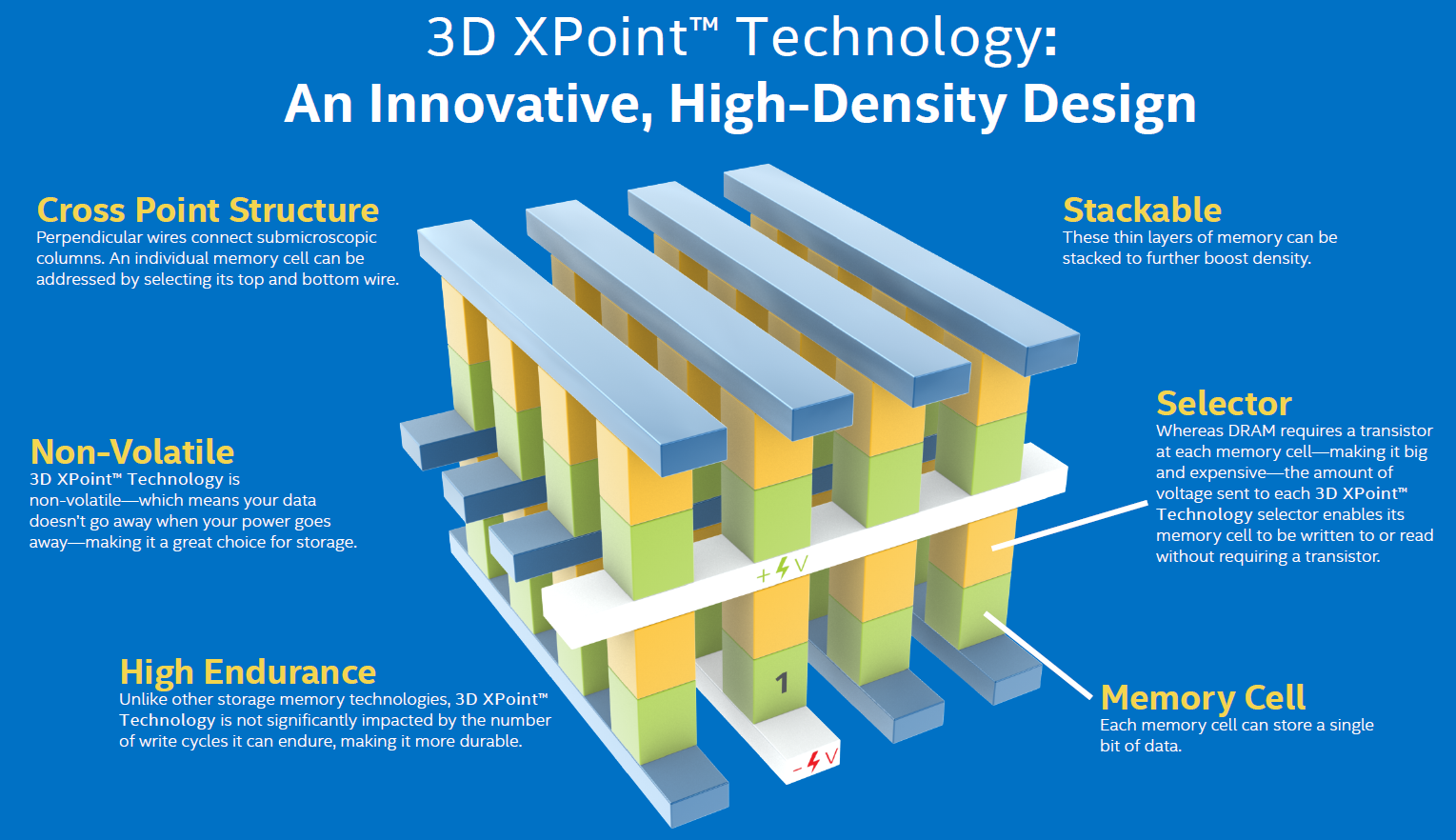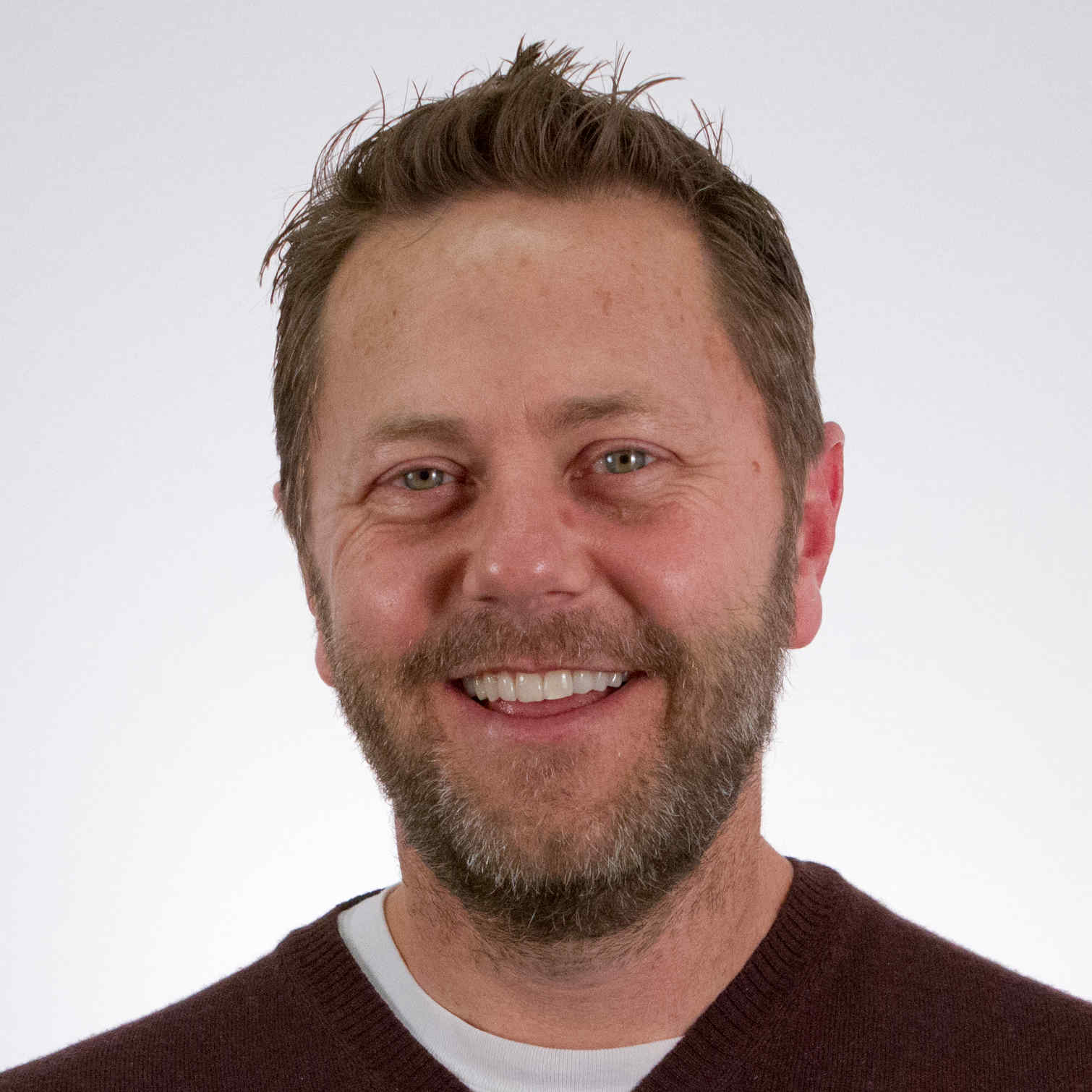Intel-Micron 3D XPoint At Xroads
Today we're sorting out what's happened with Intel and Micron's 3D XPoint collaboration since it was announced in late July.
Other Things We’ve Wondered About…
Floating Gate vs CTF
One of the things we recently learned from Micron was that charge trap flash technology (which most NAND manufacturers are moving to for 3D NAND) has endurance limitations due to charge spreading. Micron indicated that Floating Gate technology isn’t as susceptible to rapid charge loss, and that CTF increases in complexity during 3D NAND scaling. We wanted to hear this directly from Intel.
Crooke said that floating gate technology has been the foundation of NAND for 20 years, and IMFT understands the physics very well due to its extensive familiarity with floating gate technology.
3D NAND allowed IMFT to take a step back to a larger process, and instead increase the density via vertical stacking. This allows for bigger floating gates. 3D floating gates are difficult to engineer, but they still offer more robust endurance characteristics.
On the other hand, charge trap technology suffers from leakage at higher densities. The cells aren’t as discretely isolated as they are with floating gate, so CTF is susceptible to charge dispersal and interference across cells. Crooke made an analogy to a strip of cloth that is a continuous sheet of nitride, and putting oil dots on it. The dot is contained in one spot at first, but over time, the oil disperses.
Intel is all about solving the hard challenges, Crooke bragged, so it is sticking with floating gate. He said that the company’s first 3D NAND product would be the world’s first 256Gb 3D MLC NAND, and its TLC product will extend density to an unheard-of 384Gb.
QLC (Four-Bit MLC)
Quad-level cell is the next natural progression to increase the density of NAND, and this technology would prove to be very efficient when utilized in tandem with 3D XPoint caching in a hybrid implementation. 3D XPoint would be a natural type of super-fast cache front end for a massive low-endurance (and low-cost) QLC SSD data store.
When I asked Crooke about whether Intel was developing this type of implementation, he gave a knee-jerk, enthusiastic “Yes!" before throttling back down and indicating that everyone in the industry is merely thinking about it and researching it. First it would have to work.
Get Tom's Hardware's best news and in-depth reviews, straight to your inbox.
TLC 3D NAND
Samsung has been busy with data center SSDs featuring its 3D TLC V-NAND. In fact, every one of its new enterprise SSDs (which it announced at the Flash Memory Summit 2015) utilize 3D TLC NAND. During a question and answer session at FMS, Ryan Smith, the Director of NAND Marketing at Samsung Semiconductor, indicated that TLC is the “killer” application for 3D NAND, and Samsung foresees it taking over every single vertical.
Crooke would not pre-announce anything, of course, but he did say Intel has some exciting 3D NAND products coming. We recently reported our discovery of Intel’s (apparently) pending DC P3520 Series. The DC P3520 appears to be an Intel NVMe controller paired with 32-layer IMTF 3D NAND.
Current page: Other Things We’ve Wondered About…
Prev Page What We Still Don’t Know Next Page DRAM/NAND Market Impact-
JeanLuc Is there any danger of you guys ever fixing how viewers enlarge pictures on your site?Reply
Seriously I don't know how many times I've commented on this issue but it seems to fall on deaf ears and given this is meant to be one of the larger tech site it's even more absurd. -
Bartendalot Very well written piece.Reply
Seems like it could be positioned as part of the purely platform as a future proofing connector.
While I don't think we will see true consumer products until 2018 at the earliest, are we looking at the main disruptive tech of the 10nm platform, or later?
The pressure coming from other market segments might give Intel a reason to get this out quickly. -
megiv The most important number is missing : Expected price per GB. I mean, they must have this number roughly already, or else they wouldn't go public with such big announcementsReply -
PaulyAlcorn ReplyThe most important number is missing : Expected price per GB. I mean, they must have this number roughly already, or else they wouldn't go public with such big announcements
I agree, it is the most important number! IMFT is merely saying that it will be between the price of NAND and DRAM, which gives them plenty of wiggle room - and isn't specific at all. -
Eggz I think this is going to be the kind of storage tech upgrade that will have a perceived impact akin to that of the HDD --> SSD tech upgrade - except better. The capacity decrease we felt when switching to SSDs was much more dramatic than that stated in the materials for Xpoint. I really hope it comes to market soon, but this time with a more attractive set of purchase options than early SSDs did.Reply -
Achoo22 I thought the trend of putting a capital X in a product title in hopes of catching the attention of the hipster crowd died away at the turn of the millennium. Will this product be compatible with XP running on Xtreme Xaggerated Xenthusuiast hardware?Reply -
kancaras Reply10X denser M.2 that's also 1000X faster? My dreams are coming true!
its 10x denser than dram, not nand, nand is also 10x denser than dram. i wouldnt expect affordable ssds with 3d Xpoint anytime soon. maybe cheaper but abit slower ram?
-
turkey3_scratch Reply16749024 said:Is there any danger of you guys ever fixing how viewers enlarge pictures on your site?
Seriously I don't know how many times I've commented on this issue but it seems to fall on deaf ears and given this is meant to be one of the larger tech site it's even more absurd.
Just right-click on the image and select "open image in new tab" to see it in full. -
SteelCity1981 looks like high speed storage is about to get a lot cheaper with xpoint if it can hold a lot more capacity than DRAM. might end of being the final nail in the coffin for HDD.Reply


